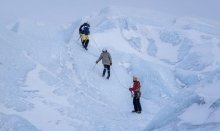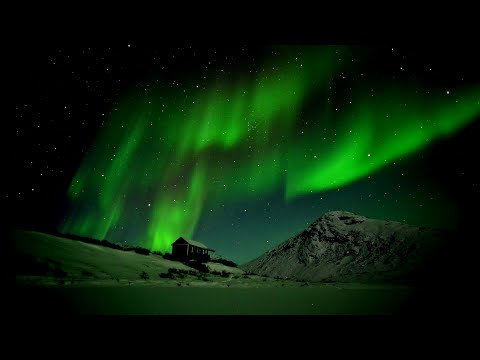Travel Tips about Greenland
Greenland is the largest island in the world and measures 2,670 kilometres from south to north.
This island is a great adventure destination for dog sledging, whale watching, hiking, and snowmobiling to mention some. Greenland is the biggest country in the Nordic region.
A Viking discovered Greenland
The Viking Erik the Red was the first to discover the biggest island in the world and chose the name "Greenland" to entice settlers from Iceland, according to the Icelandic Sagas.
Greenland has far more ice cover than Iceland, as about 80% of its surface is covered by the Ice Cap, but in the ice-free regions, it is possible to hike, ride a dogsled, get close to glaciers or sail the fjords. All transportation between towns in Greenland happens by air and sea because no towns are connected by roads.
Greenland is today famous for "The Big Arctic Five," which includes dog sledging, the magic Northern Lights, the fascinating whales and the people of Greenland.
The most popular towns in Greenland are Kangerlussuaq, Illilusat, Nuuk and Sisimut
Dog sledging, Midnight Sun and the Northern Lights
In the northern part of Greenland, in the Ilulissat Icefjord, there are some of the world`s giant icebergs and some of the world`s fastest glaciers. The Ilulissat fjord is a UNESCO world heritage attraction. Most tourists also visit Disco Bay, Ilulissat and the Egg glacier in North Greenland.
Western Greenland, also known as Central Greenland
This area stretches from Sisimiut and Kangerlussuaq in the north to Nuuk in the south, which is the capital of Greenland. Most tourists will arrive in Kangerlussuaq because Greenland has an international airport. From here, you can go to other destinations in Greenland but stay some days in Kangerlussuaq because here you have the best access to the Ice Cap.
Visit the Ice Cap at Kangerlussuaq
The Ice Cap is visible in almost all towns. In Kangerlussuaq, an old U.S. Air Force base until 1992, you find the 25 km dirt road to the Ice Cap in Greenland. A magnificent sight is also to watch the glacier edge calves into the sea.
Warm springs in South Greenland
The southern part of Greenland is green with rugged rocks, and in the summertime, the area is very colourful with a lot of flowers and is perfect for hiking many trails. The country got its name because the Viking Eric the Red chose to drop anchor here from his tour from Iceland and was so impressed by the green meadows he saw all over the area.
Southern Greenland differs from the north with its rugged rocks, warm springs, and green meadows. This place is extravagantly colourful in summer, and although there are no dogsleds here, Southern Greenland offers many other types of experiences.
Here, you will find smaller icebergs in blue and white nuances that have floated down from the north, loads of sheep and excellent hiking trails. Moreover, this was where Erik the Red chose to drop the anchor because he was so impressed by the green hillsides he saw all over the area, and this was also good "branding" to attract more people from Iceland many years ago.
Whales in the West and North Greenland
Up to 15 species of whales visit the sea around Greenland, but the most common are the fin whale, humpback whale, and minke whale. Thousands of humpback whales choose West Greenland waters near Paamiut, Maniitsoq, and Aasiaat to play in for a few months in the summer. The whales swim from the Caribbean Sea to feed in Greenland in the summer.
In winter, it is only possible to see whales in North Greenland around Disko Bay and Qaanaaq or in Northeast Greenland. Here there are only three different species, the narwhal, the beluga and the bowhead whale.






















